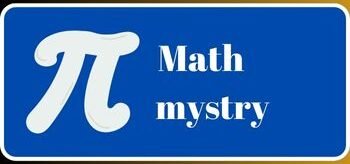Currently Empty: $0.00

The Enigma of the Riemann Hypothesis
The Riemann Hypothesis is often described as the Everest of mathematics. First introduced in 1859 by Bernhard Riemann, it has remained unsolved for more than 160 years. At its heart, the hypothesis attempts to uncover the hidden structure behind prime numbers—the indivisible “atoms” of mathematics.
This connection is not just abstract. The Riemann Hypothesis is deeply tied to the mysterious distribution of prime numbers (read more in our article on prime numbers). If proven true, it would reshape not only mathematics but also modern technology, from cybersecurity to quantum science. That’s why it stands among the prestigious Millennium Prize Problems, carrying a $1 million reward for the first correct proof.
Understanding Prime Numbers and the Zeta Function
Prime numbers—2, 3, 5, 7, 11, and so on—seem simple at first glance, yet their distribution follows no obvious pattern. For centuries, this irregularity has puzzled mathematicians.
For a deeper dive into their role in mathematics, read our detailed guide on Prime Numbers Explained.
👉 Learn more from Prime Numbers (Wikipedia).
To address this, Riemann introduced the
zeta function
ζ(s)=∑n−s
The Hypothesis suggests that the non-trivial zeros of this function—special points where it equals zero—line up along a single critical line. If this alignment is true, it would unlock the hidden order behind prime numbers and explain why they appear so randomly distributed.
See more at Riemann Zeta Function – Wolfram MathWorld.
Why the Riemann Hypothesis Matters
Cybersecurity and Encryption
Everyday digital security, from online banking to private messaging, depends on the difficulty of working with very large prime numbers. Solving the Riemann Hypothesis could change this landscape entirely. On one hand, it might weaken current encryption systems, putting sensitive data at risk. On the other hand, it could inspire next-generation cryptographic methods that are nearly impossible to break.
A Link to Quantum Physics
Surprisingly, the spacing of zeros in the zeta function mirrors patterns seen in quantum physics. This strange similarity hints at a possible universal law connecting pure mathematics with physical reality. For researchers, solving the Riemann Hypothesis could serve as a bridge between numbers and the natural world.For further
The Million-Dollar Challenge
Since 2000, the Clay Mathematics Institute has recognized the Hypothesis as one of its seven Millennium Prize Problems. The reward is not just the $1 million prize—it’s also the honor of solving one of the greatest unsolved mysteries in human knowledge.
👉 Learn more from the Official Prize Page.
The Long Search for Proof
The quest to prove the Riemann Hypothesis reads like a mathematical detective story:
A Historical Timeline
Early 1900s: Mathematicians confirmed that infinitely many zeros align with the hypothesis.
Mid-20th century: Computers were used to test and verify zeros at larger scales.
Today: Supercomputers have checked trillions of zeros, and every single one fits the prediction.
Yet, despite all this evidence, no general proof exists. Testing individual cases is like verifying stars in the night sky—you might confirm countless examples, but that still doesn’t prove the pattern holds for all.
👉 Related: Michael Atiyah’s Proof Claim and Why It Failed.
What Lies Ahead?
Expert Perspectives
Scholars remain divided. Some argue that solving the Hypothesis requires entirely new mathematical tools. Others believe the breakthrough could come from unexpected fields like physics or computer science. A few even suggest it might be undecidable, meaning no proof is possible within the current framework of mathematics.
Why the Mystery Endures
What makes the Riemann Hypothesis so captivating is its wide impact. It touches not just number theory but also cryptography, computer science, physics, and philosophy. At its core, it raises profound questions:
Is there hidden order behind apparent chaos?
Does mathematics reveal deeper truths about the universe?
For more philosophical reflections, see the Stanford Encyclopedia of Philosophy.
Final Thought
The Riemann Hypothesis is far more than a mathematical riddle—it is a symbol of humanity’s search for truth and order. Whether solved tomorrow or left unanswered for centuries, it continues to inspire, challenge, and unite the brightest minds in the world of science.
👉 Want to explore more number mysteries? Visit mathmystry.

